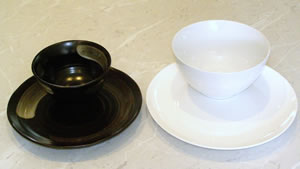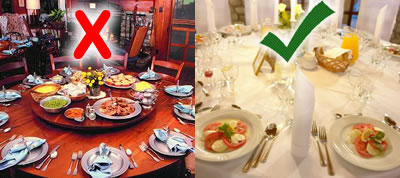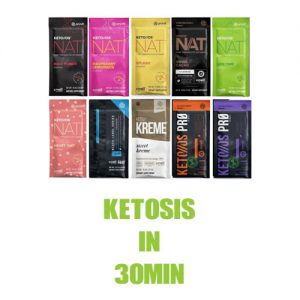If you’ve ever tried to count calories, calculate grams, or weigh each food portion, you know how time-consuming and confusing it can be. The good news is that HOW MUCH you eat is not as important as WHAT you eat. When you eat the right foods for your body’s needs, it is very difficult to overeat. However, you may feel that even when eating nutritious meals, you stuff yourself until your stomach hurts. Yet, calculating portion sizes doesn’t seem to help you stop going back for second and third helpings. So here are some simple solutions to help you eat the right amount of food every time.
Your first task is to get some smaller plates.

If your eyes are bigger than your stomach, then it doesn’t help you get perspective when you are putting your food on large dinner plates. Most average plates are too big for the average person’s meal portion. Eating is a very visual experience, and we tend to feel satisfied with our portion when it fills most of our plate. So go to the store and buy smaller plates. You will only have to do this once, but it will help you avoid overeating forever.
Secondly, estimate each portion by using your hand size.
Calculating grams and weighing food just takes more of your time away from planning and preparing your meals, so instead, use the fist or palm of your hand as an estimate for one portion. Then put on your plate one portion (one fist) of meat or other animal food, and one portion (one fist) of vegetables or other plant food. For low carbohydrate vegetables and fruits, such as spinach and berries, use two portions (two fists) per meal to get enough energy requirements. You don’t have to be precise, as this is just a way to estimate each portion, and really all that is required.
Next, put your cooked or prepared food on your plate, and leave the rest of the food in the kitchen.
Even better, put any leftovers in the fridge immediately. Avoid the urge to eat “family style”, where all the food gets served at the table and the leftovers sit in the middle of the table, tantalizing you to have seconds and thirds or keep picking at the food long after your portion is finished. Save family style meals for special gatherings or dining out Asian style. The same goes for snacks: take what you need and put the rest back before you start eating. This is probably the most common reason for overeating and the easiest to change. Simply get your estimated portion of any meal or snack onto your plate, and then put the rest of the food AWAY!

An important pitfall to avoid…
is an extreme diet where one type of food, protein, fat, or carbohydrate is cut out greatly or completely. Low-calorie, low-fat and low-carb diets can be a recipe for overeating, as nutrient requirements may not be fulfilled so your body signals this with increased hunger. However, our personal ratio requirements of animal food (protein and fat) to plant food (carbohydrates) varies, so knowing your metabolic type is a great starting point to help you understand which types of foods you need to eat in a higher ratio.
All that’s left is paying attention to your body’s signals to find out which are the right foods for you.
Take note of how you feel right after, and up to three or four hours after each meal or snack. The goal is to feel satisfied, energetic and alert. If you feel hungry, tired or mentally sluggish, it’s not because you didn’t eat enough, but because you didn’t eat the right foods. With the right foods and these portion control tips put in action, overeating will be a thing of the past.
Stop Overeating – Sizing Up Portion Control – October 2012








